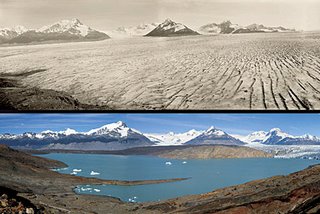 Driving In Okinawa
Driving In OkinawaThe bits of Okinawa I saw the most were the northern bits of the main island. There's the 'National Road 58' that runs length-wise and from Naha International Airrport, you can drive straight up that road through one of the most congested streets in Naha up to the northern area of the island.
The Aquarium is located about 2/3rds of the Island up so you drive north along the '58' and then you turn left at the town of Nago, drive through the town of Motobu, and you arrive at the coast where there's a national park and a bunch of 'resort' hotels. The funny thing about the '58' is that when you leave Naha, it says you have 50km to get to the National Park, but the speed limit is 50kph. So you think, "we'll get there in an hour..."
At about 30km out, the speed limit becomes 30kph. "and you think, "Darn, it's still 1 hour away..."
At about 20kms out, the speed limit drops to 20kph. "Hang on," you think. "That means the destination is about an hour away still..."
At 15kms out the speed limit actually dropped to 15kph.
This was getting to be a bit too much like Zeno's paradox; were we ever going to get to this damned place? In total it took 3 hours to get to our destination hotel.
Resort Hotels In OkinawaThey have many a resort hotel on the coastline. Some are big, some are small, but they all have magnificent views of the sea. The first hotel we stayed in had nice rooms, but no internet access whatsoever. The second hotel we stayed at had magnificent rooms, but no access to international calls and no internet access. They wouldn't even let a dial-up modem go through. That's how I found myself in an IT Blackhole for 2 weeks.
The business hotel in Naha rocked. Free wi-fi access, coming down the pipe at a rate faster than anything in Australia! I loved the 3 nights in Naha.
The People of OkinawaIt has to be said though, the people in Okinawa are really friendly. They are welcoming and want you to have a good time whether your visit may be for business or play. And that made working a lot easier. They are laid back, a bit like our own Aussies, and they are very generous with their time. It's a fantastic place to visit to unwind.
Funniest Thing I Saw In Okinawa
They have Asps in Okinawa. So they have this show here: The Asp versus Mongoose show, nightly at this restaurant. I don't know why it's so amusing but there it is in all its heavenly glory. They're a little hard-up for entertainment at the north end of the Island.
AmericansOkinawa is of course where one of the bloodiest campaignss were carried out between the Allies andd the Japanese; caught in the middle were the actual denizens of the island of whom 150,000 perished. The island was bombed to kingdom come as the Japanese military tried a scorched earth strategy, trying to inflict as much casuaalties on the Allies. Since the end of WWII, there have been US bases on the island and this has been the source of much trouble; Okinawa itself made it back to being part of Japan in 1972.
I asked the locals what he thought about it. he said, "I was still in primary school. We all thought it was good. Like, from now on it was actually going to snow in our winters. I don't know what we were thinking."
Anyway, it turns out some people have done very well out of the American occupation. particularly farmers and land owners who collect a stipend from the US government for the 'noise pollution' caused by the Air Bases. You don't see those people complaining about the bases. While international geopolitics dictates that the USA would like to keep a base in Okinawa. It's also true that it costs them a bundle. There are now moves to rationalise the troops and therefore the US presence on Okinawa by moving bases and this is causing even more political brouhahahas.
I will say this. it's really disconcerting to see a US marine in combat fatigues driving through civillian Naha.
 Here's the Link.
Here's the Link. 

















